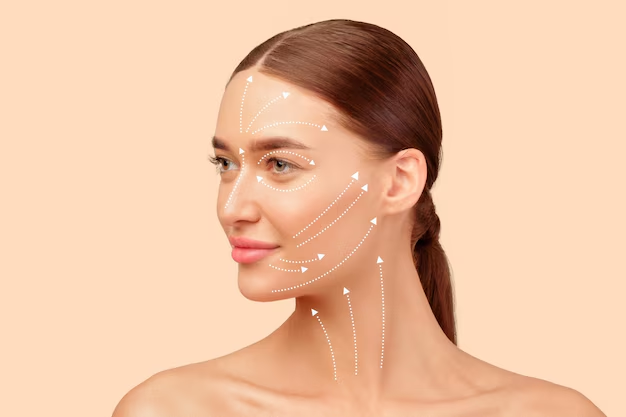As we age, our skin loses elasticity, and the effects of gravity, sun exposure, and daily life begin to show on our faces. A facelift, or rhytidectomy, is a comprehensive surgical solution designed to address these visible signs of aging in the lower face and neck. This procedure can restore a more youthful, refreshed appearance by tightening underlying tissues, removing excess skin, and recontouring the face and jawline.
What is a Facelift?
A facelift is a surgical procedure that targets significant aging in the mid-face, jowls, and neck. It’s important to understand that a facelift primarily addresses the lower two-thirds of the face. For comprehensive facial rejuvenation, it is often combined with procedures like a brow lift or eyelid surgery.
Signs a Facelift Can Address:
-
Deep creases along the nose and mouth (nasolabial folds)
-
Loss of a well-defined jawline (jowling)
-
Sagging skin and fat deposits in the neck
-
Loose skin and wrinkles in the cheek area
Modern Facelift Techniques
SMAS Lift:
This is the modern standard. The Surperficial Musculo-Aponeurotic System (SMAS) is the deep tissue layer beneath the skin. By lifting and tightening this layer, surgeons can achieve a more natural, longer-lasting result with less tension on the skin.
Deep Plane Facelift:
A more advanced technique where the SMAS layer and the overlying skin are lifted as a single unit. This allows for more significant repositioning of tissues and can be particularly effective for the mid-face.
Mini Facelift:
A less invasive option for patients with earlier signs of aging. It involves smaller incisions and a shorter recovery time, but the results are more subtle and less long-lasting than a full facelift.
The Facelift Journey: What to Expect
1. Consultation and Planning:
Your surgeon will assess your bone structure, skin quality, and fat distribution. Computer imaging may be used to discuss potential outcomes and set realistic goals.
2. The Procedure:
Performed under general anesthesia or intravenous sedation, the surgery typically takes 3-5 hours. Incisions are strategically placed within the hairline and natural contours around the ears to minimize visibility.
3. Recovery Timeline:
-
First 2 weeks: Significant swelling and bruising. A compression garment is worn. Stitches are removed.
-
Weeks 3-4: Most swelling subsides. Many feel comfortable returning to social activities.
-
Months 2-3: Residual swelling continues to fade, and the final contour begins to emerge.
-
6+ months: The final, natural-looking result is fully apparent.
Complementary Procedures
For optimal results, a facelift is often enhanced with:
-
Neck Lift: To specifically address sagging in the neck.
-
Eyelid Surgery (Blepharoplasty): To rejuvenate the eyes.
-
Fat Grafting: To restore lost volume in the cheeks and temples.
-
Skin Resurfacing: To improve skin tone and texture.
Frequently Asked Questions (FAQ)
How long do facelift results last?
While a facelift “turns back the clock,” it does not stop it. Results typically last 7-10 years. Many patients find they still look younger than their peers years after the procedure.
Will I look “overdone” or unnatural?
The “wind-tunnel” look is a result of outdated techniques. A modern, skilled surgeon focuses on restoring a natural, refreshed version of you—not creating a new person.
What is the difference between a facelift and non-surgical treatments?
Non-surgical treatments like fillers and threads are excellent for early aging and maintenance. A facelift is a surgical solution for significant skin laxity that non-surgical methods cannot correct.
What are the potential risks?
As with any surgery, risks include bleeding, infection, scarring, and nerve injury that could affect facial movement. Choosing a qualified, experienced surgeon is the best way to minimize these risks.
A facelift is a powerful procedure that can restore confidence and provide a long-term solution to facial aging. The key to success lies in personalized planning and expert surgical execution.





